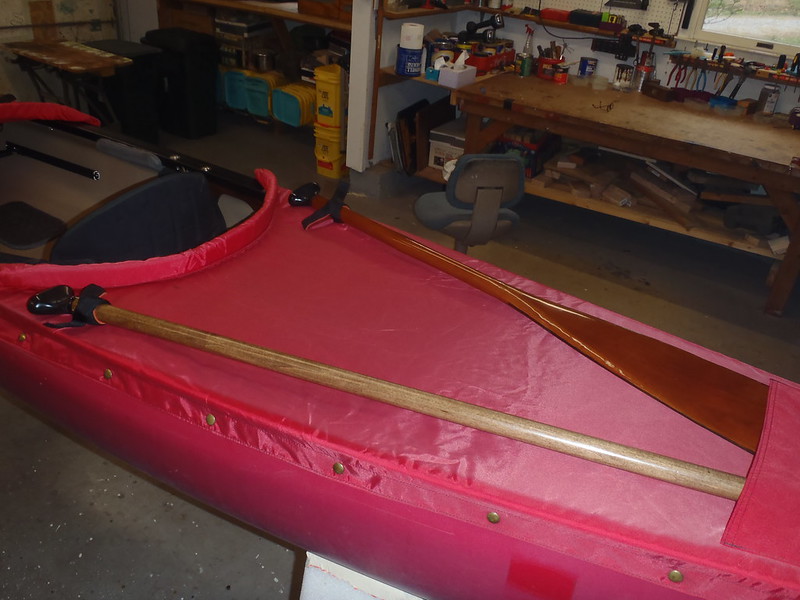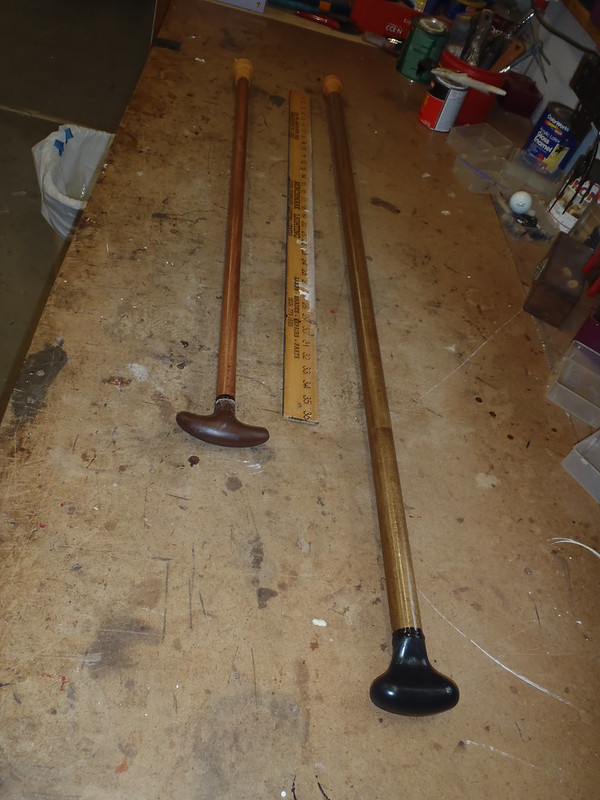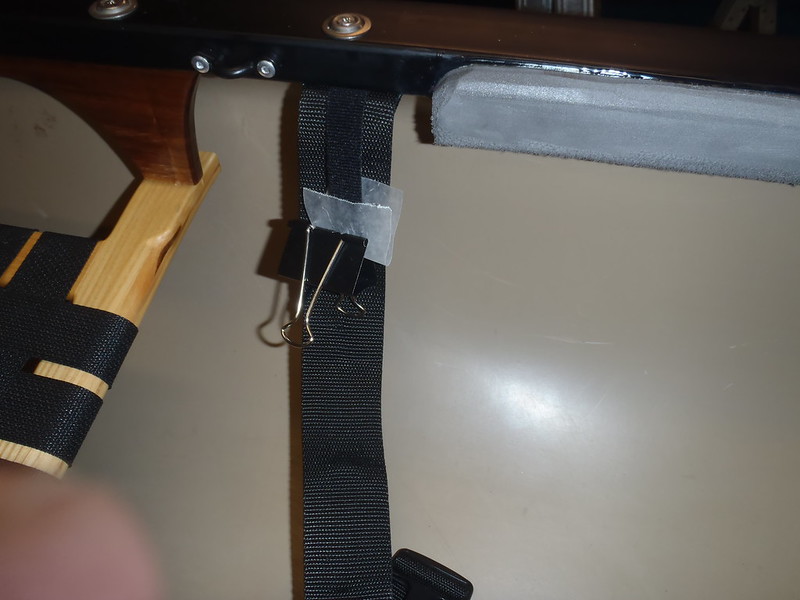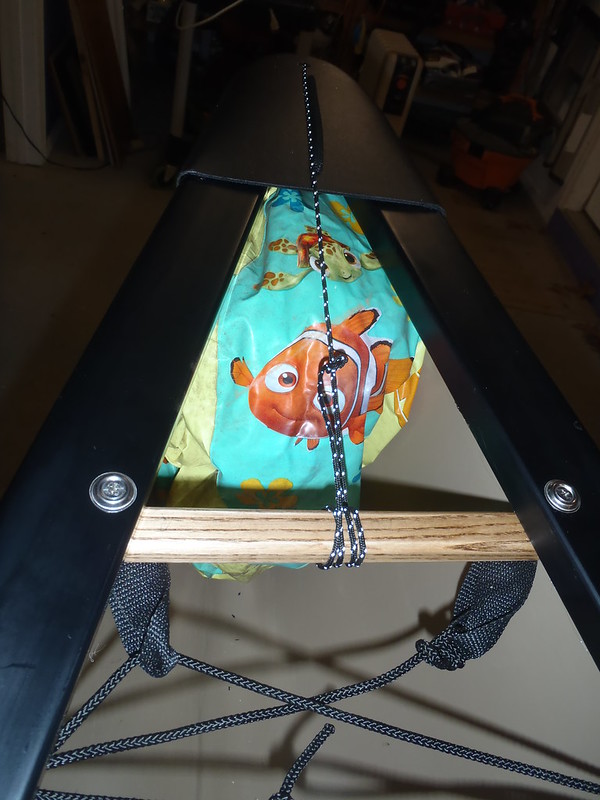- Joined
- Jul 6, 2021
- Messages
- 643
- Reaction score
- 562
I wish you could paddle it right now too my friend. While the busted up Yellowstone Solo is fully rehabilitated you still need some shoulder time. Speaking of which, the Mystery Peg-Ended Dowel Project is also finished.
The Cooke Custom Sewing paddle pockets and lash straps on the bow and stern covers are perfect for my usual paddle propulsion, double blade secured up front, single blade stored aft.
 PB270030 by Mike McCrea, on Flickr
PB270030 by Mike McCrea, on Flickr
But I also like to bring a short “push pole” for a variety of reasons; grounded out on a sandbar or brief cobble shallows, where a single push will see me floating free, and as a hiking staff and even a spare tarp pole in camp.
But our usual tripping canoe six footer is way too long.
 PB270032 by Mike McCrea, on Flickr
PB270032 by Mike McCrea, on Flickr
Even our shortest, a five footer with a tee end, is a bit too long. I need a shortstuff push pole for a shortstuff 14’ canoe. A four footer fits perfectly; stained and urethaned, with a broad, grippy crutch tip stuck on the sanded down fitted bottom peg, and a Mohawk pear grip epoxied on the fitted top peg.
 PB280035 by Mike McCrea, on Flickr
PB280035 by Mike McCrea, on Flickr
I really like those plastic Mohawk pear grips for revamped single blades or push pole purposes, perfect OD match for that 1 ¼” hardwood dowel.
https://www.mohawkpaddles.com/product/pear-grip-replacement/
 PB280037 by Mike McCrea, on Flickr
PB280037 by Mike McCrea, on Flickr
I had a shorter, skinnier 3 foot dowel, and had the tabletop sander, urethane and epoxy out, what the hell, might as well make a three footer with an ugly old T-grip, which had the perfect OD for that 7/8” dowel.
 PB280033 by Mike McCrea, on Flickr
PB280033 by Mike McCrea, on Flickr
The cane sized three footer doesn’t fit between the paddle pocket and lash strips very securely, but the four footer fits perfectly, and I may need to make another at that size. I did not (yet) epoxy the crutch tips on the bottom pegs, one or the other or both may serve a different purpose. Constant paddler friend Joel is recuperating from a motorcycle accident. He’s lucky to be alive with just a broken leg, ligament damage and shoulder surgery.
He is hobbling around with a cane, a standard aluminum crook-topped Granny model, and facing some months of shoulder rehab. I’m not a physical therapist, but as someone who makes their living guiding paddle trips he may eventually benefit from making a gentle paddling motion before ever getting in a boat.
He could start with the three footer, 7/8” dowel, eight ounces with tee grip and crutch tip, and work his way up to the five footer, 1 1/8” dowel, just over 1lb, left for now uncut too tall to be Hopalong cane handy.
Easy enough to cut down to hobble-around size; I’ll bring them both and a saw next time I visit. I can always make another, and kinda want to. The pear grip is comfy on a paddle, but a tee-grip is handier on a short push pole; it can become a pull pole to hook a friend’s gunwale when muckling up or grab a limb or branch, in boat or in camp.
I don’t have another crappy old tee grip, but I’ll find one somewhere.
The Cooke Custom Sewing paddle pockets and lash straps on the bow and stern covers are perfect for my usual paddle propulsion, double blade secured up front, single blade stored aft.
 PB270030 by Mike McCrea, on Flickr
PB270030 by Mike McCrea, on FlickrBut I also like to bring a short “push pole” for a variety of reasons; grounded out on a sandbar or brief cobble shallows, where a single push will see me floating free, and as a hiking staff and even a spare tarp pole in camp.
But our usual tripping canoe six footer is way too long.
 PB270032 by Mike McCrea, on Flickr
PB270032 by Mike McCrea, on FlickrEven our shortest, a five footer with a tee end, is a bit too long. I need a shortstuff push pole for a shortstuff 14’ canoe. A four footer fits perfectly; stained and urethaned, with a broad, grippy crutch tip stuck on the sanded down fitted bottom peg, and a Mohawk pear grip epoxied on the fitted top peg.
 PB280035 by Mike McCrea, on Flickr
PB280035 by Mike McCrea, on FlickrI really like those plastic Mohawk pear grips for revamped single blades or push pole purposes, perfect OD match for that 1 ¼” hardwood dowel.
https://www.mohawkpaddles.com/product/pear-grip-replacement/
 PB280037 by Mike McCrea, on Flickr
PB280037 by Mike McCrea, on FlickrI had a shorter, skinnier 3 foot dowel, and had the tabletop sander, urethane and epoxy out, what the hell, might as well make a three footer with an ugly old T-grip, which had the perfect OD for that 7/8” dowel.
 PB280033 by Mike McCrea, on Flickr
PB280033 by Mike McCrea, on FlickrThe cane sized three footer doesn’t fit between the paddle pocket and lash strips very securely, but the four footer fits perfectly, and I may need to make another at that size. I did not (yet) epoxy the crutch tips on the bottom pegs, one or the other or both may serve a different purpose. Constant paddler friend Joel is recuperating from a motorcycle accident. He’s lucky to be alive with just a broken leg, ligament damage and shoulder surgery.
He is hobbling around with a cane, a standard aluminum crook-topped Granny model, and facing some months of shoulder rehab. I’m not a physical therapist, but as someone who makes their living guiding paddle trips he may eventually benefit from making a gentle paddling motion before ever getting in a boat.
He could start with the three footer, 7/8” dowel, eight ounces with tee grip and crutch tip, and work his way up to the five footer, 1 1/8” dowel, just over 1lb, left for now uncut too tall to be Hopalong cane handy.
Easy enough to cut down to hobble-around size; I’ll bring them both and a saw next time I visit. I can always make another, and kinda want to. The pear grip is comfy on a paddle, but a tee-grip is handier on a short push pole; it can become a pull pole to hook a friend’s gunwale when muckling up or grab a limb or branch, in boat or in camp.
I don’t have another crappy old tee grip, but I’ll find one somewhere.








